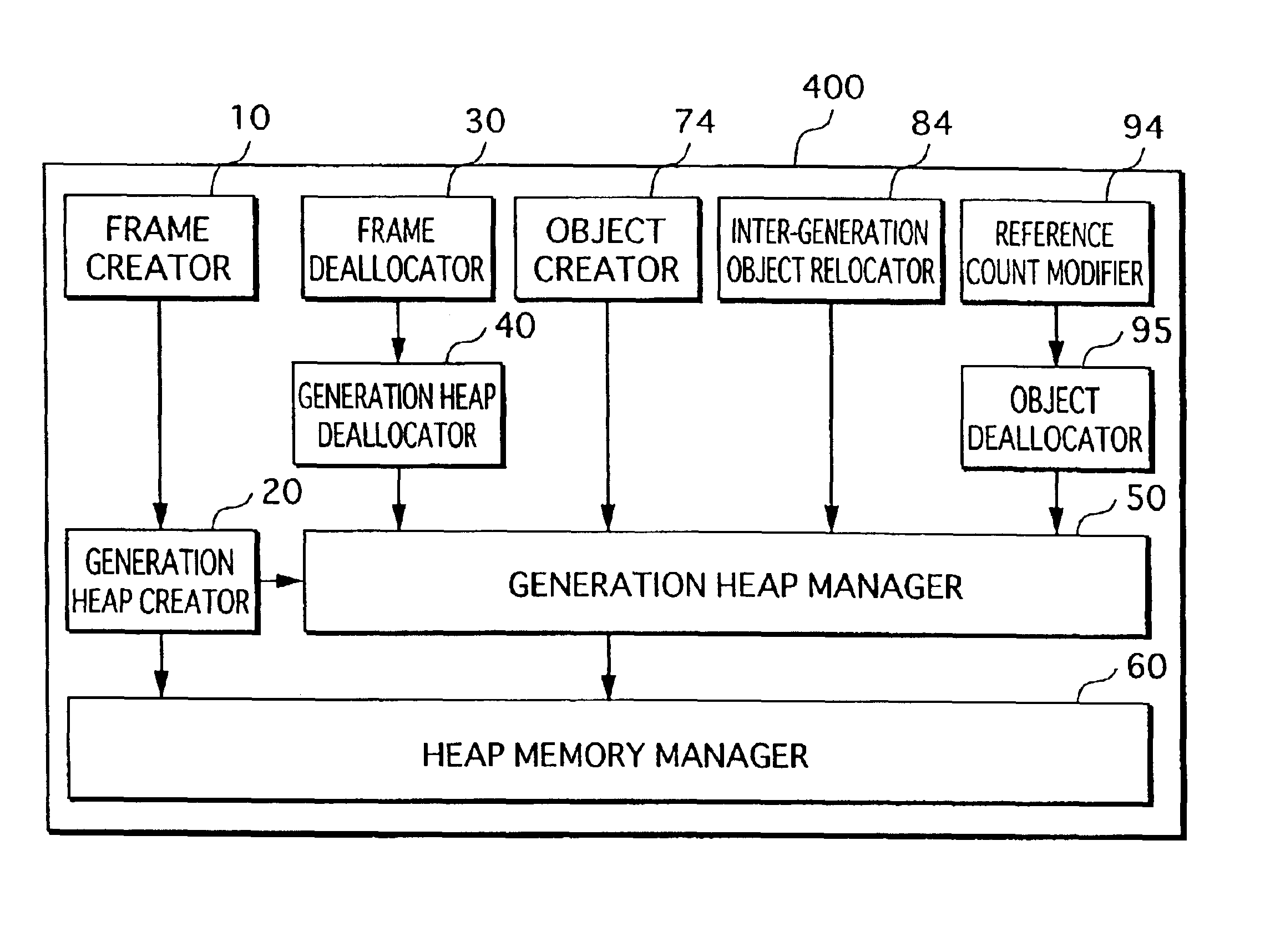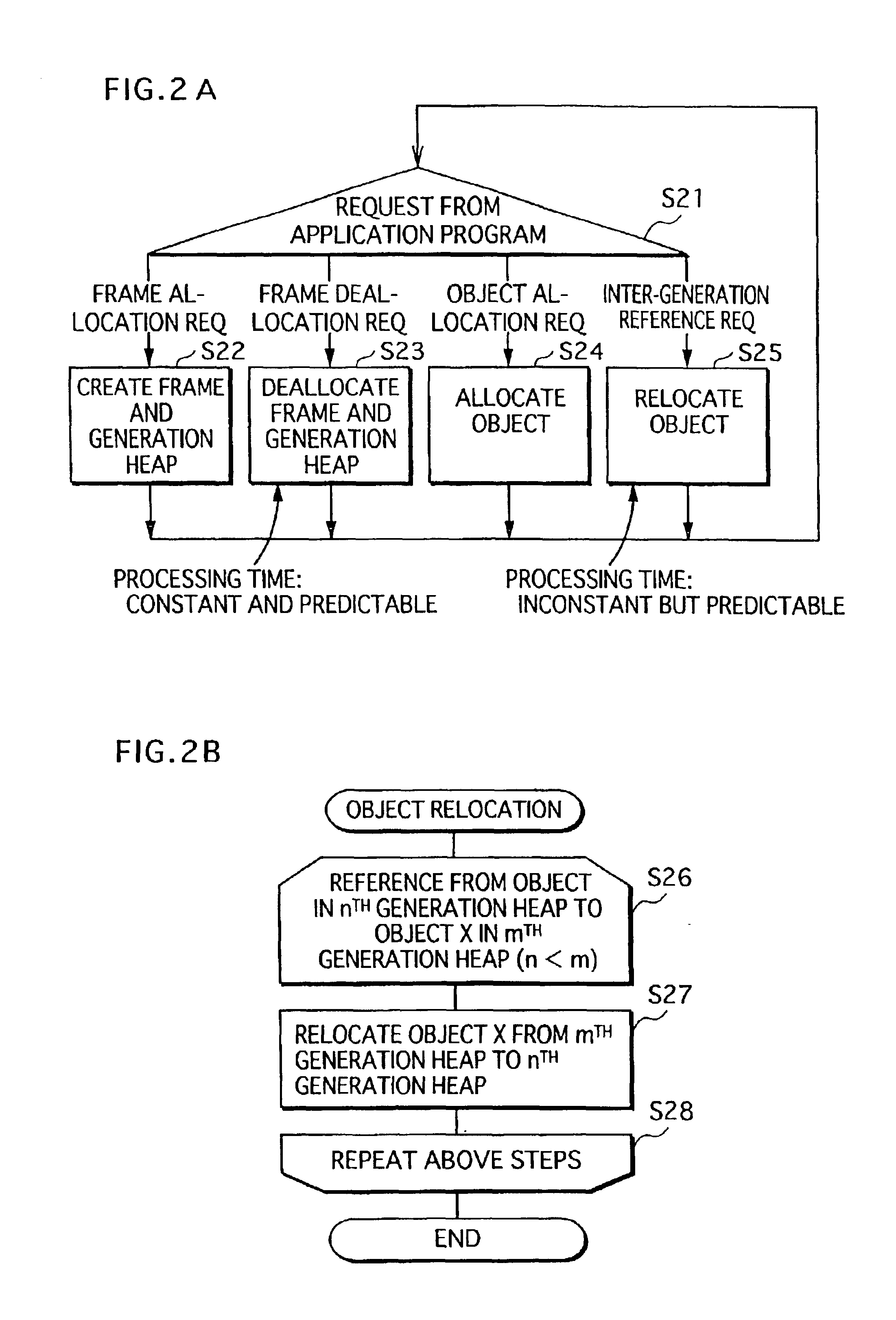Apparatus, method, and program for implementing garbage collection suitable for real-time processing
a garbage collector and real-time processing technology, applied in data processing applications, multi-programming arrangements, memory allocation/allocation/relocation, etc., can solve the problems of inability to complete the required processing within the predetermined time, difficult to predict when and how long the garbage collector interrupts the application program, and none of the conventional techniques are suitably applied to the application program
- Summary
- Abstract
- Description
- Claims
- Application Information
AI Technical Summary
Benefits of technology
Problems solved by technology
Method used
Image
Examples
embodiment 8
[0075]FIG. 31 is a view showing object creation processing performed by the object creator 70 of the garbage collector ;
[0076]FIG. 32 is a view showing sub-processing for inter-generation object relocation performed by the inter-generation object relocator 80 of the garbage collector according to the embodiment 8;
[0077]FIGS. 33A and 33B are views showing handle memory creation processing and handle memory deallocation processing that each garbage collector of the embodiments 1-6 needs to additionally perform;
embodiment 1
[0078]FIG. 34 is a view showing object creation processing performed by the object creator of the embodiment 1 instead of the processing shown in FIG. 6A;
[0079]FIG. 35 is a view showing generation heap deallocation processing performed by each generation heap deallocator of the embodiments 1-6 instead of the processing shown in FIG. 5B;
[0080]FIG. 36 is a view showing sub-processing for inter-generation object relocation performed by each inter-generation object relocator according to the embodiments 1 and 4 instead of the processing shown in FIG. 8B;
[0081]FIG. 37 is a view showing object creation processing performed by each object creator of the embodiments 2 and 3 instead of the processing shown in FIG. 11A;
embodiment 4
[0082]FIG. 38 is a view showing object creation processing performed by the object creator of the embodiment 4 instead of the processing shown in FIG. 17;
[0083]FIG. 39 is a view showing object deallocation processing performed by each object deallocator of the embodiments 4-6 instead of the processing shown in FIG. 20; and
[0084]FIG. 40 is a view showing object creation processing performed by each object creator of the embodiments 5 and 6.
DESCRIPTION OF THE PREFERRED EMBODIMENT
[0085]Now, description is given to embodiments of the present invention with reference to the accompanying drawings.
[0086]
[0087]FIG. 1 is a block diagram schematically showing the construction of a garbage collector 100 according to an embodiment 1 of the present invention. The garbage collector 100 is implemented by a computer provided with a CPU, a memory, and other components by the CPU executing a control program stored in the memory. In addition, the garbage collector runs on an operating system, and thus...
PUM
 Login to View More
Login to View More Abstract
Description
Claims
Application Information
 Login to View More
Login to View More - R&D
- Intellectual Property
- Life Sciences
- Materials
- Tech Scout
- Unparalleled Data Quality
- Higher Quality Content
- 60% Fewer Hallucinations
Browse by: Latest US Patents, China's latest patents, Technical Efficacy Thesaurus, Application Domain, Technology Topic, Popular Technical Reports.
© 2025 PatSnap. All rights reserved.Legal|Privacy policy|Modern Slavery Act Transparency Statement|Sitemap|About US| Contact US: help@patsnap.com



